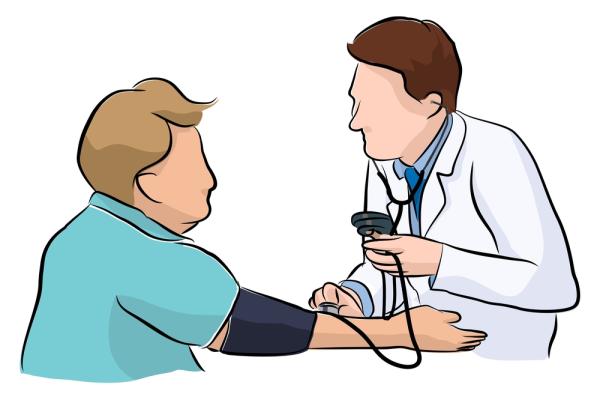When we check our blood pressure, we usually do it in one arm or the other. But there is a good reason to check our blood pressure in both arms. A large difference in systolic blood pressure between arms – defined as ≥ 10 mm Hg - may be a sign of increased cardiovascular disease – and even the threat of death.
That is because when blood pressure is higher in one arm, it may be because of narrowing in a blood vessel, called “artery”, in that arm. The most common cause of blood vessel narrowing in the body is atherosclerosis (buildup of cholesterol); and, since atherosclerosis tends to affect blood vessels throughout the body, it can impede blood flow to vital organs like the heart and the brain, causing a heart attack or stroke.
Mild Inter-arm systolic blood pressure difference of <10 mm Hg is not uncommon and does not seem to have clinical significance. But a difference of ≥ 10 mm Hg has been shown by many studies to be a marker of cardiovascular disease (CVD) and mortality. A recent meta-analysis published by Clin Exp Hypertens 2016 illustrates the association between inter-arm blood pressure difference and an increase in death from cardiovascular events.
In the study, researchers reviewed data from seven prior studies (from U.S., U.K., S.Korea, and China) that specifically evaluated mortality rate in people with inter-arm systolic blood pressure difference (SBPD). The study included 17,439 participants. Two groups were evaluated: those with ≥ 10 mm Hg SBPD and those with ≥15 mm Hg SBPD. The follow-up period was 3-16 years depending on the study. There was a total of 693 deaths related to cardiovascular events.
When participants who had SBPD of <10 mm Hg were compared to those who had a SBPD of ≥ 10 mm Hg, the rate of cardiovascular mortality was 58% higher in the latter group. When participant with SBPD of <15 mm Hg were compared to those with SBPD of ≥15 mm Hg, mortality rate was almost double (88% higher) in the latter group. Based on the study results, participants with higher SBPD had a higher likelihood of dying from cardiovascular events. In a sub-group analysis, mortality risk did not differ by age, gender, baseline blood pressure, or country of origin.
The findings of this study are consistent with earlier meta-analyses, which also showed SBPD to be a marker for higher cardiovascular events as well as mortality – even more pronounced when the difference in blood pressure between arms was greater. People with additional risk factors for cardiovascular diseases, such as those with higher blood pressure, diabetes, high cholesterol, and advanced age, tend to have a higher SBPD and therefore, worse outcomes.
Study Limitations: Other causes of blood vessel narrowing, apart from atherosclerosis, and their impact on mortality, were not part of this study. Furthermore, SBPD was only recorded at the onset of the studies; so, the effect of improved blood pressure readings, or risk modification, over time was not assessed.
Simultaneous vs Sequential: Ideally, the most reliable way to evaluate inter-arm blood pressure difference would be to simultaneously check both arms, as is done in research settings; this can help prevent a phenomenon called “order effect,” in which subsequent blood pressure readings are likely to be higher than previous ones, resulting in an overestimation of SBPD.
Take-Home Lessons:
- When blood pressure is normal in one arm, it does not mean that it is also normal in the other arm.
- Checking blood pressure in both arms is a simple and non-invasive tool for assessing CVD risk.
- Although atherosclerosis in the arms is not common, when it is present, the likelihood of atherosclerosis in more susceptible organs, like the heart, is almost certain.
- When there is a disparity of blood pressure between arms, it is advisable to consult with a physician to confirm the finding.
- If SBPD is confirmed, there are tests that can be done to look for narrowing or occlusion of blood vessels, which can pave the way for risk modification.
Cardiovascular disease is a result of multiple risk factors such as high cholesterol, diabetes, smoking, advanced age, and high blood pressure, all of which contribute to atherosclerosis. A difference in Inter-arm blood pressure readings can be a quick and simple way to detect the presence of atherosclerosis; yet, it is severely underutilized.
An increase in awareness of this simple tool can help prevent adverse outcomes through early intervention.




